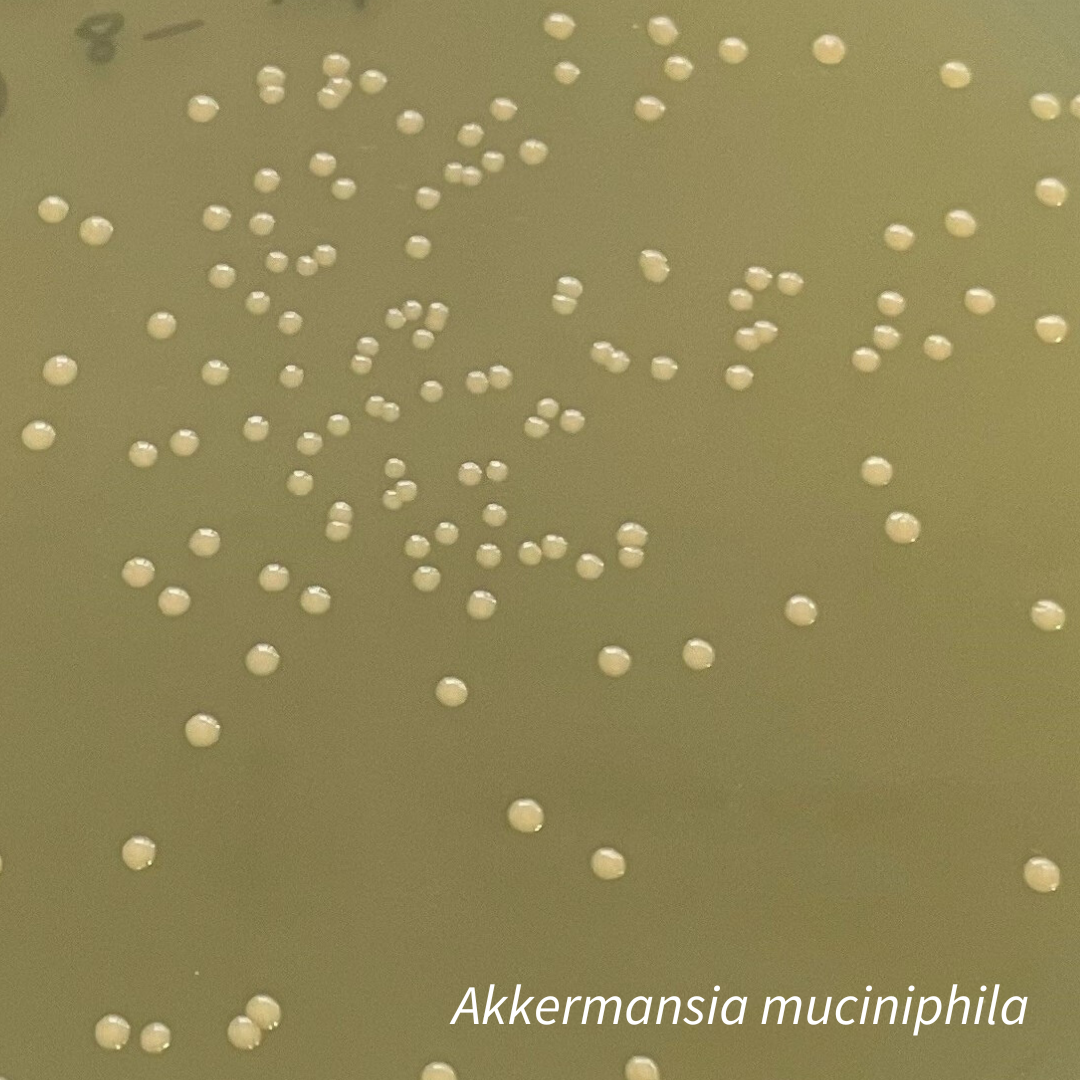
The Therapeutic Potential of Akkermansia muciniphila
Akkermansia muciniphila is a Gram-negative, ovoid, obligately anaerobic and non-motile bacterium that belongs to the Verrucomicrobia phylum and was first characterised in 2004 [1,2]. The bacterium resides in the epithelial crypts of the small intestine, within the mucosal layer, and therefore is able to utilise mucin as a carbon and nitrogen source. The degradation of mucin via enzymes released by the bacterium contributes to the production and release of short-chain fatty acids (SCFAs) into the gut, particularly acetic and propionic acids, and sulphates as a byproduct, thus stimulating mucin production and enhancing the gut barrier function [1,2]. It has been shown that 3-5% of the whole human gut microbiome is comprised of A. muciniphila within healthy adults, with variations based on age, ethnicity and underlying gut disorders [2,3] .
Research has shown that A. muciniphila abundance is correlated with obesity and related metabolic disorders. Wang et al (2023) recently investigated the relationship between A. muciniphila abundance within the gut and the rates of intractable small intestine toxicity remission, using a mouse model [3]. The mice were treated with dextran sodium sulfate (DSS) to induce DSS- ulcerative colitis and then orally administered live A. muciniphila. Within the responsive group, the symptoms of colitis were less severe in mice that had a higher abundance (approximately six times more) of A. muciniphila and longer retention time compared to the poor responsive and control groups [3]. Furthermore, they found that the presence of A. muciniphila enhanced gene expression of other bacteria within the niche such as ribosomal translation and glycolysis, particularly in Lactobacillus reuteri and Lactobacillus murinus, both of which are established probiotics [3]. The team then created an A. muciniphila named AKK@MFe₃O₄ which had been tagged with a magnetic, mannose-loaded nanotechnology. The modified A. muciniphila could be guided under an external magnetic field and exhibited enhancements in inflammation targeting and intestinal colonisation, and therefore increasing the positive response rate and therapeutic efficacy against small intestinal damage [3].
Cani et al. (2022) investigated the effects of A. muciniphila on insulin resistance and dyslipidaemia. The research group administered A. muciniphila to 40 overweight/obese participants daily over 3 months, either alive or in a pasteurized form [4]. It was found that the pasteurized form of A. muciniphila improved insulin sensitivity and total cholesterol levels, while decreasing body weight and fat mass [4]. Moreover, serum gamma-glutamyl-transferase (γ-GT) fell by 24% and serum aspartate-aminotransferase (AST) levels also decreased in comparison to the control group [4]. Furthermore, white blood cell count as well as serum lipopolysaccharide levels also showed significant reduction [4]. Though there is still much research to be done to fully understand its therapeutic potential, studies such as these show promising results for the use of A. muciniphila as a probiotic to treat obesity and other gut disorders.
 With the emerging evidence that A. muciniphila is a viable probiotic, several companies are looking to produce live biotherapeutic drugs utilising this bacterium. This is achieved by initially culturing from a master cell bank, propagation via anaerobic
With the emerging evidence that A. muciniphila is a viable probiotic, several companies are looking to produce live biotherapeutic drugs utilising this bacterium. This is achieved by initially culturing from a master cell bank, propagation via anaerobic
fermentation and mixing the cells with cryoprotectants before lyophilising to create a powdered drug product that can be capsulised or mixed with a food grade excipient [5]. In the DWS Microbiology Laboratory, we have extensive experience with growing and manipulating this organism on behalf of our customers, using our Whitley Workstations. A muciniphila needs strictly anaerobic conditions and requires growth medium containing mucin, and we have undertaken developmental work to optimise suitable growth conditions for this organism. We perform viability and stability testing of A. muciniphila live biotherapeutic products by determining viable cell counts using enumeration techniques, and total cell counts using hemocytometry.
Written by DWS Microbiologist Charlotte Austin
References
- Abbasi A, Bazzaz S, De Cruz AG, Khorshidian N, Saadat Y, Sabahi S, Ozma M, Lahouty M, Aslani R, Mortazavian A, (2023) Critical Review on Akkermansia muciniphila: Functional Mechanisms, Technological Challenges, and Safety Issues. Probiotics and Antimicrobial Proteins
- Yu X, Ning W, Hor-Yue T, Sha L, Cheng S, Yibin F (2020) Function of Akkermansia muciniphila in Obesity: Interactions With Lipid Metabolism, Immune Response and Gut Systems. Frontiers in Microbiology Volume 11
- Wang B, Chen X, Chen Z, Xiao H, Dong J, Li Y, Zeng X, Liu J, Wan G, Fan S, Cui M (2023) Stable colonization of Akkermansia muciniphila educates host intestinal microecology and immunity to battle against inflammatory intestinal diseases. Experimental and Molecular Medicine. Volume 55. 55–68
- Cani P, Depommier C, Derrien M, Everard A, de Vos W, (2022) Akkermansia muciniphila: Paradigm for next-generation beneficial microorganisms. Nature Reviews Gastroenterology and Hepatology Volume 19, 625–637
- Advisory Committee For Novel Foods and Processes (2023) Akkermansia Muciniphila from the Akkermansia Company SA Discussion Paper https://acnfp.food.gov.uk/AkkermansiaMuciniphilafromtheAkkermansiaCompanySADiscussionPaper


 en
en

 English
English